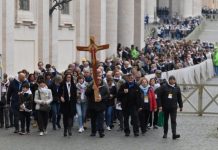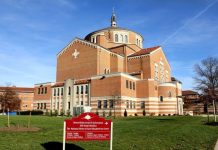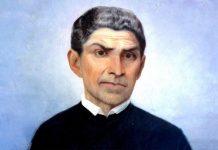Today, 10 August, the Church celebrates the Feast of St. Lawrence, a Catholic deacon and martyr during the Roman Empire in the reign of Valerian.
Newsroom (10/08/2021 22:50, Gaudium Press) Saint Lawrence, a Spanish Saint, also known as Lawrence of Huesta or Valencia, was born in 225. To complete his studies he was sent, while still a young man, to the city of Cæsaraugusta (today Zaragoza), where he met the future Pope Sixtus II.
Pope Sixtus appointed him as the first of seven deacons in the service of the Roman Church. In this particular role, he was in charge of the Church Treasury and was responsible for distributing part of his income to the poor. The name Lorenzo (Lawrence), is translated as Laureamtenens, which means Crown Made of Laurel, the crown that winners received following their victories. Saint Laurence acted as an aide to Pope Sixtus II and was responsible for a centre dedicated to the poor.
Martyrdom: the witness of faith
In 257, Christians were being persecuted and killed by the order of Emperor Valerian I, and in 258, Pope Sixtus II was beheaded. As he walked towards the place of execution, St Lawrence accompanied the Pope and said: “Where are you going without your deacon, my Father? You have never offered the Sacrifice of the Mass without my help!” The Pope, moved by these words of filial devotion, replied: “I am not abandoning you, my son! God has reserved for you a greater trial and a more brilliant victory, for you are young and strong… in three days you will follow me.”
After the Pope’s execution, the Emperor demanded that the Church give him all of Her possessions within three days. After the three-day deadline had passed, Saint Laurence brought forth the poor who were being assisted by the Church and said to the Emperor: “These are the goods of the Church.” Valerian, then in a rage, ordered that St. Lawrence be burned alive.
Furious, he ordered the deacon’s death but demanded that it be slow and cruel. They stripped St. Lawrence naked and laid him on a grate, with half-raised coals underneath. Those who witnessed the ordeal perceived the martyr’s face encompassed by an extraordinary splendour.
The sacrifice of a martyr
This Saint maintained his joy until the moment of execution, proving his deep faith in eternal life, in the encounter with Jesus Christ. This is how, in the most agonizing moment of his life, ( in the eyes of the world ) Lawrence joyfully said to the soldiers:
“Turn me over; I am cooked on that side.”
After they had turned him over, he said:
“I am roasted, you can eat.”
Then, looking up to Heaven, he prayed to God for the conversion of Rome and died.
A great crowd was present at the Martyrdom of St. Lawrence; among these people, many were converted to Jesus Christ when they beheld the witness of the young Saint.
Senators, converted by the example of his constancy, carried his body on their backs and buried it.
St. Prudentius, a contemporary of Lawrence, confirmed this fact when he wrote of how the example of St. Lawrence had led several Romans to conversion.
He was buried in the cemetery of Siriaca in Agro Verão on the Via Tiburtina in Rome, where a basilica was later erected in his honour.
The basilica, by the grace of God – who honours his Saints – was built by another Roman Emperor: Constantine.
Two years after the martyrdom of Saint Lawrence, Valerian was captured by the Persians, and the Roman Emperor died a prisoner far from his home.
God loves those who suffer, especially those who suffer with resignation and in union with Him. Let us ask Saint Laurence for the same serenity and resignation in our sufferings that he exhibited during his martyrdom.
Compiled by Sandra Chisholm



































